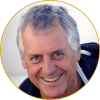Birds fly, fish swim, snakes slither and, despite the modern human obsession with speed and convenience, it’s hardwired into our DNA to walk. It’s what our ancestors did daily in their quest for food, water and firewood, just as indigenous people continue to do today. Scientists are affirming in study after study what our bodies have always known: Walking – and especially walking within the loving embrace of the natural world – is a wonderful path to health, wholeness, happiness, inner peace and often amazing insights.
The good news is that it’s also free and accessible to most of us.
Some 25 centuries ago Hippocrates, the father of medicine, observed: “Illnesses do not come upon us out of the blue. They are developed from small daily sins against Nature. When enough sins have accumulated, illnesses will suddenly appear.” Walking, he insisted, is humanity’s best preventative and curative medicine.
Philosopher Friedrich Nietzsche believed that “all truly great thoughts are conceived while walking” and even cautioned us to “never trust a thought that didn’t come by walking.”
Physicist Albert Einstein was of a like mind: “The legs are the wheels of creativity.”
More recently Richard Louv, author of Last Child in the Woods and The Nature Principle, coined the term Nature Deficit Disorder. He noted that our increasing disconnection from Nature leads to stress, anxiety, depression, confusion, a sense of hopelessness and even things like obesity.
Children need to grow up climbing trees, swimming in streams and lakes, understanding their kinship to the animals and creatures and feeling the Earth beneath their bare feet. We adults need that too.
How interesting that I travelled millions of miles on seven continents – flying, driving and sailing – and yet it was only more recently, while walking at the pace of our ancestors, that I slowed enough to appreciate the difference between being a tourist and a pilgrim. Guess I’m a slow learner!
Spending time with Earth Pilgrim Satish Kumar, an 84-year-old former Jain monk, was pivotal in shifting my focus and understandings.
“Tourists value the Earth and all her natural riches only in terms of their usefulness to themselves, while pilgrims perceive the planet as sacred and recognise the intrinsic value of all life,” he explained.
He urged me to walk solo and in silence at the start of each day, enthusing: “As a pilgrim I discover the mystery, the magic, the meaning and the magnificence of life in every step I take, in every sound I hear and in every sight I see.”
Since then it has invariably been in Nature that I’ve found my greatest inspiration and clarity. Mostly those magical lightbulb moments have happened while walking or sitting alone in a place of natural beauty, often at daybreak while celebrating the luminosity of first light.
Increasingly I’m also noticing that my early walk isn’t an indulgence but a necessity. My sensitivity to the electromotive forces (EMF) of smart phones and wi-fi routers seems to be increasing. The more screen time I subject myself to, the more urgent the compulsion to step through the door and begin walking.
Richard Louv notes: “The more high-tech we become, the more Nature we need.
“The future will belong to the Nature-smart – those individuals, families, businesses and political leaders who develop a deeper understanding of the transformative power of the natural world and who balance the virtual with the real.”
One of my greatest joys is the crunch and caress of beach sand beneath my bare feet, and it turns out there’s scientific support of this practice as health-enhancing.
‘Earthing’ involves aligning our body to the Earth’s surface energies, ideally by walking barefoot outside. It seems that if our energy is resonating with that of the Earth, our body will be in a more natural state, which is energising and healing.
“I like to imagine each step as a blessing given and received” Geoff

